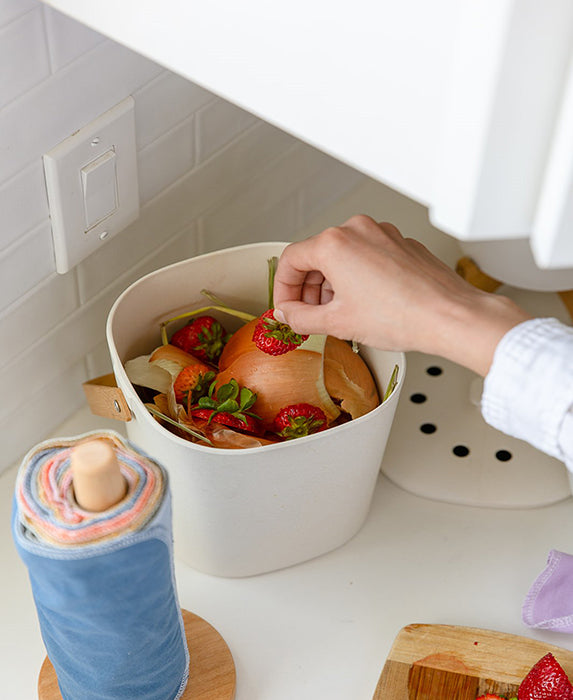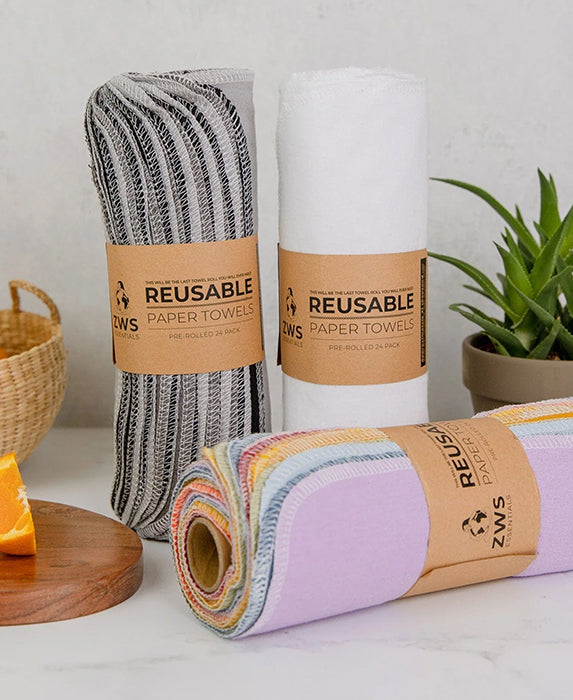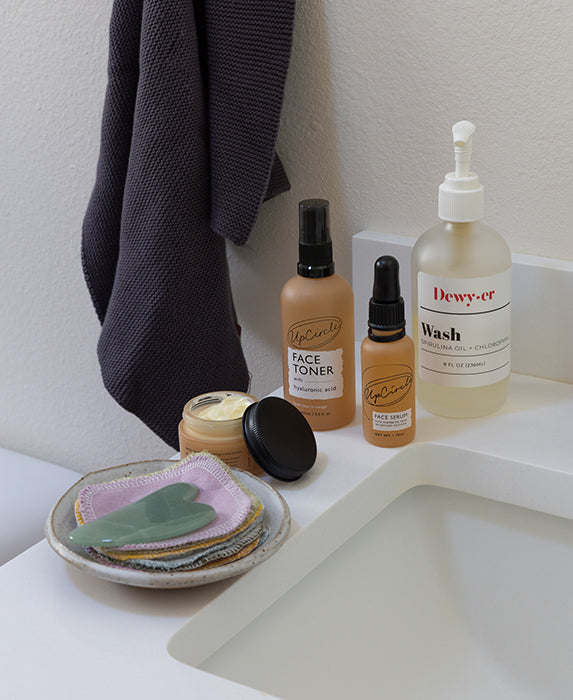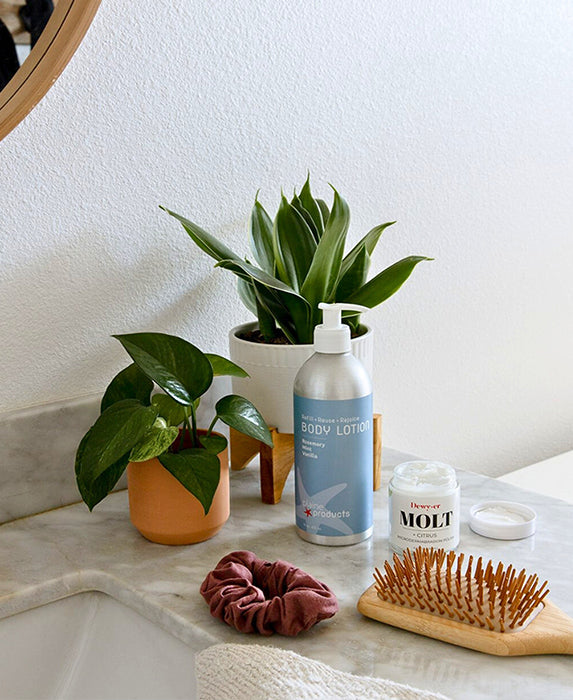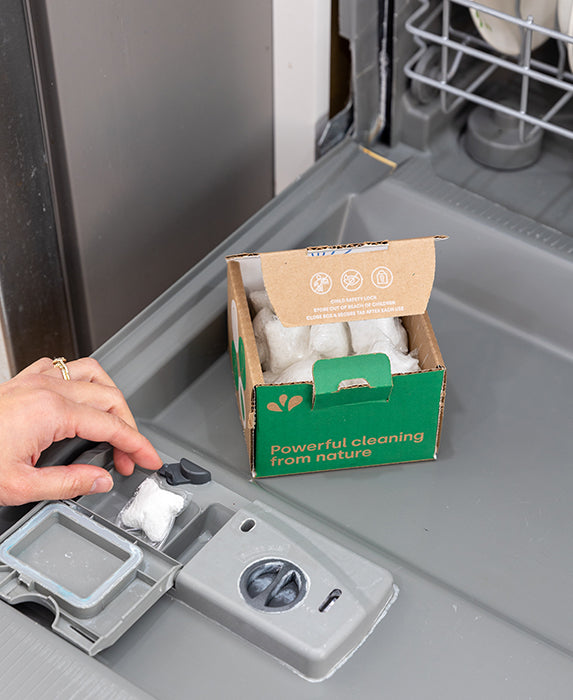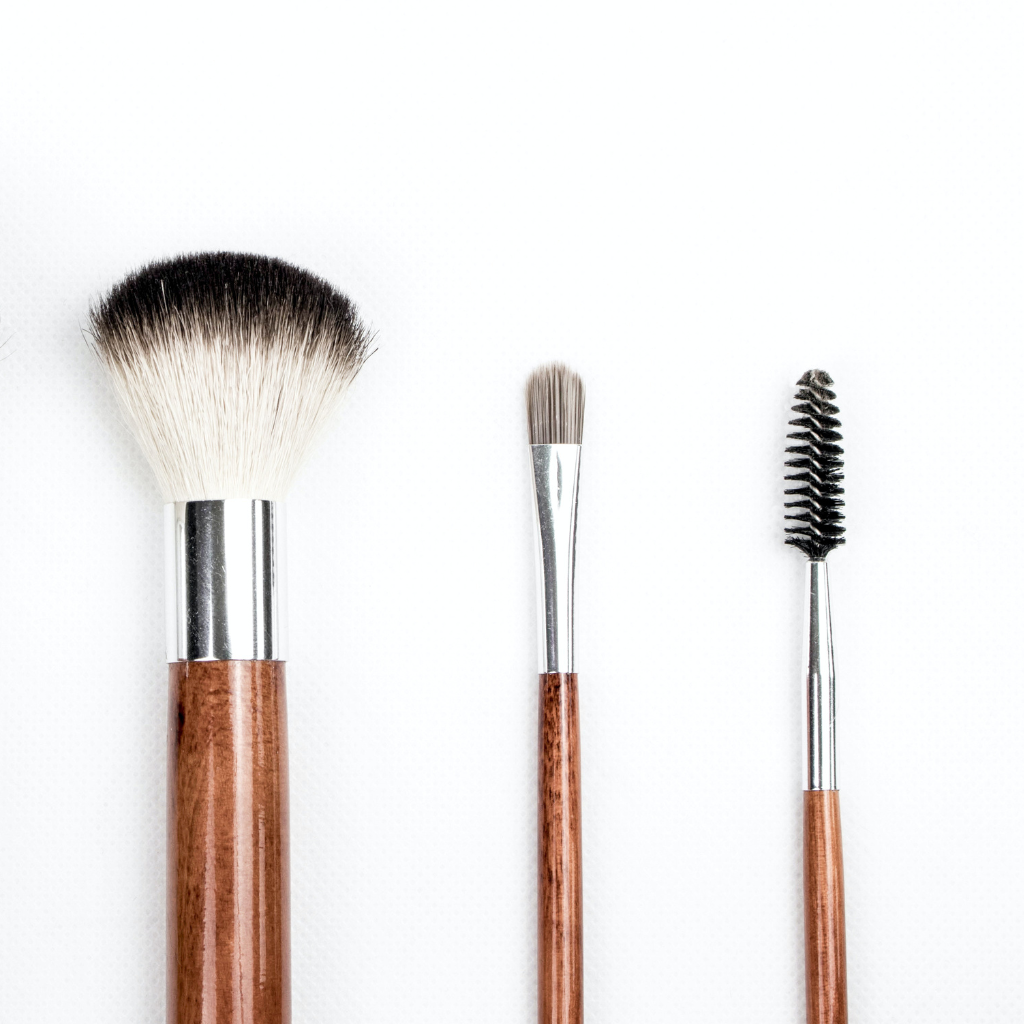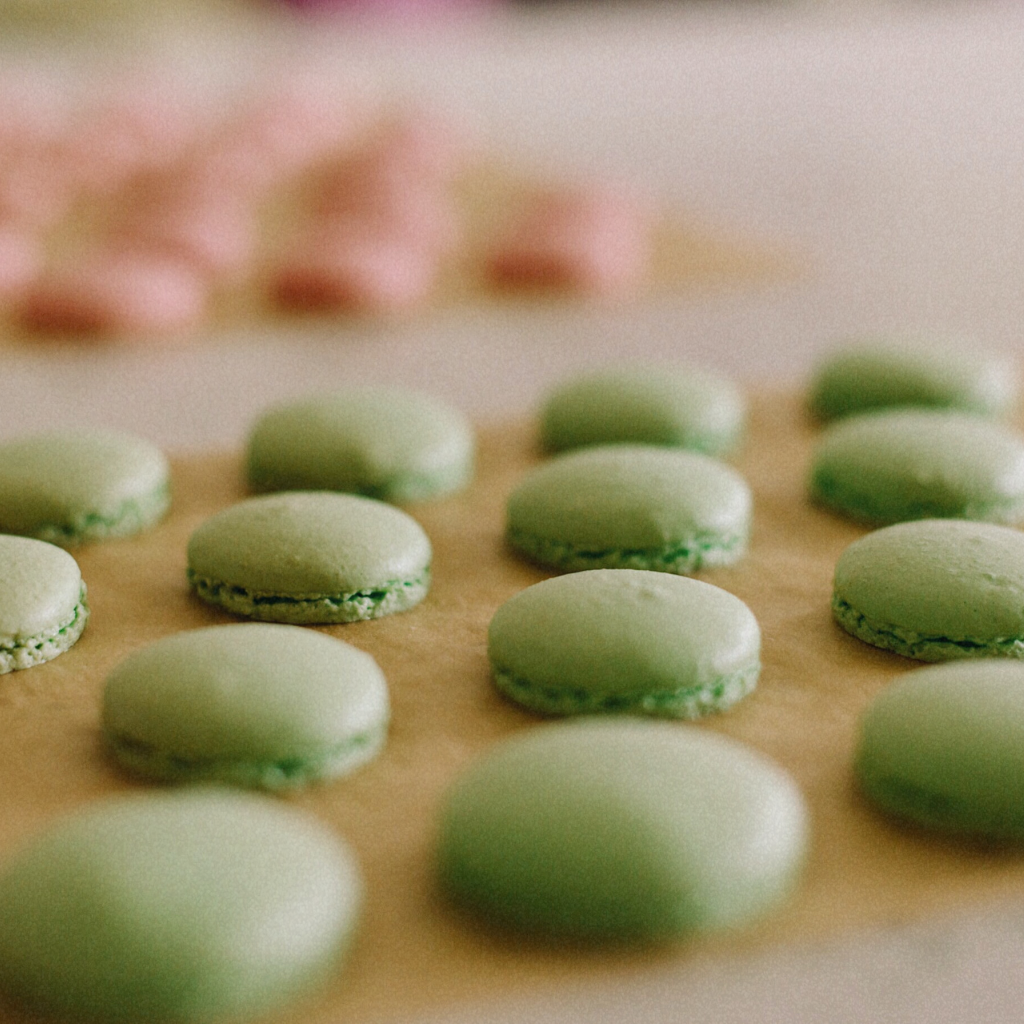This blog was originally published on October 21, 2022 and was most recently updated on January 31, 2023.
Anybody interested in living a healthy, sustainable lifestyle will come to a point where they question their everyday routines and habits. And when it comes to your beauty care and makeup routine, it’s no different. The problem is, the US is behind the rest of the world when it comes to the regulation of safe ingredients in cosmetics.
Currently, the US Food and Drug Administration (FDA) only bans or restricts eleven ingredients in cosmetics known to cause serious health issues or diseases. That’s a desperately low number when compared to the 1,600 ingredients banned or restricted by the EU.
The good news is that there are several toxic-free makeup options you can choose from, and as more people jump on the clean beauty trend, more companies will focus on creating clean cosmetics. Now, with a little education, the next time you are ready to revamp your beauty routine, you’ll be prepared to make well-informed decisions about finding ethically sourced toxic-free makeup products.
Clean Beauty Defined: What makes a product “non-toxic”?
Clean beauty is all about swapping your traditional cosmetics with healthier options. Clean beauty products are made without toxic chemicals or any other ingredients that could be harmful to human health. However, clean beauty isn’t interchangeable with being chemical-free, all natural, or organic, etc. There are many safe synthetic, man-made ingredients that can be found in clean beauty products. As long as it doesn’t pose a human health risk, it’s considered clean and non-toxic.
3 toxic ingredients you should avoid
With that said, there are specific toxins we have learned to avoid in cosmetics. The skin is the largest organ, and the first line of defense for our body. Over time we have found that certain harmful chemicals and toxins found in cosmetics can penetrate the skin and be absorbed into the body.
While some products don’t absorb past the first layer of skin, enough ingredients do, and have the potential to make their way into your bloodstream. Cosmetics containing toxic ingredients have been linked to serious health problems such as cancer, fertility and neurological issues, hormone imbalances, and more. There are several toxic ingredients in beauty products you should watch out for. But, here are three common ones to avoid:
Talc
Magnesium silicate, otherwise known as talc, or talcum powder, is a naturally occurring mineral that’s mined from the ground. Talc is often used in makeup such as eyeshadow, blush, and powdered foundations. Talc is even found in lipsticks and mascara. Talc helps makeup to absorb moisture and keep the product from “caking” together which can lead to a heavy or uneven finish during application.
Unfortunately, talc is often contaminated with asbestos, another naturally occurring mineral often found in close proximity to one another. When talc is extracted, it disturbs the asbestos nearby, causing the talc to be contaminated by airborne asbestos fibers. While talc itself is a safe substance, asbestos is known for being extremely toxic to human health, causing cancer and other related diseases.
PFAS
Per- and polyfluoroalkyl substances (PFAS) are a class of over 4,000 chemicals used in cosmetics for their film-forming ability and to increase product wear and durability. Regarded as “forever chemicals,” PFAS take a long time to break down, making them hard to eliminate. Makeup with the highest levels of PFAS are foundations, eye and lip products, and mascara, but they can also be found in other makeup products. We’re just starting to understand the effects of these forever chemicals and the long-term effects they have on our health. What we do know is that PFAS are endocrine-disrupting chemicals known to increase the likelihood of cancer, infertility issues, and a weakened immune system.
The No PFAS in Cosmetics Act, a bill introduced to the US senate in 2021, would finalize a rule to ban the use of intentionally added perfluoroalkyl or polyfluoroalkyl substances in cosmetics. But, eliminating the PFAS already produced will have to be a worldwide undertaking.
Parabens
Parabens are a class of chemicals often used in cosmetics and beauty products as a preservative to help extend the products’ shelf life and are found in moisturizers, soaps, and shaving creams. However, research shows that parabens mimic estrogen in the human body and impacts the reproductive system. The FDA doesn’t regulate the use of parabens as a preservative in cosmetics, so be sure to remember common parabens like methylparaben, propylparaben, ethylparaben, and butylparaben to help reduce your risk of exposure.
Other toxic ingredients to stay away from
How to identify non-toxic makeup
Identifying toxic-free makeup is easy once you know what to look for. And now that you know what harmful ingredients to stay away from, finding sustainable toxic-free makeup will be an easy task. To help you remember, the Campaign for Safe Cosmetics has a handy red list of hazardous chemicals to avoid. When it’s time to shop for toxic-free makeup options, bring your red list and remember that the first step to identifying toxic-free makeup options is to check the label.
Check the label
Reading labels can feel like a chore – Especially when the list is full of long, exhausting chemicals. At EarthHero, we prioritize organically grown materials and ingredients without artificial fragrances or colors, chemical sunscreens, or petroleum-derived sulfates. In our clean beauty category, you can shop confidently, knowing that our products are gentle on both you and the planet. When shopping at big box retailers, look for items listed on your red list and consider the mindset that the fewer ingredients listed, the better. Ingredient lists that are simple and straightforward will always be your safest bet.
Look for certifications
Logos and certifications are helpful tools when shopping for toxic-free cosmetics. Clean beauty products often have labels that state whether a product is paraben free, phthalate-free, or sulfate-free to help consumers choose products that fit their needs. Other certifications to look for are those labeled with sustainability, ownership, or representation in mind.
Insist on sustainability
Everything on our site is vetted through our 5-Pillar Sourcing Methodology to help build a community of truly earth-conscious brands, dedicated to offering sustainable, quality products without compromising our planet. Goods made from sustainable materials often have a longer lifespan, but when it reaches the end of its life, it also means it’s easier to dispose of it sustainably. That’s why we prioritize sourcing materials that are readily biodegradable or compostable, like natural fibers or bio-based formulas. Indicators like Fair Trade Certified, B Corp, Climate Neutral, and Cruelty Free help us ensure that the products on our site were not made at the expense of makers or the planet.
Finding toxic-free makeup can feel like a hard job, at first. With a bit of research and consideration, switching your toxic beauty routine with clean, healthy, and sustainable products, can feel just like second nature–And help keep you on the path towards greater health.

